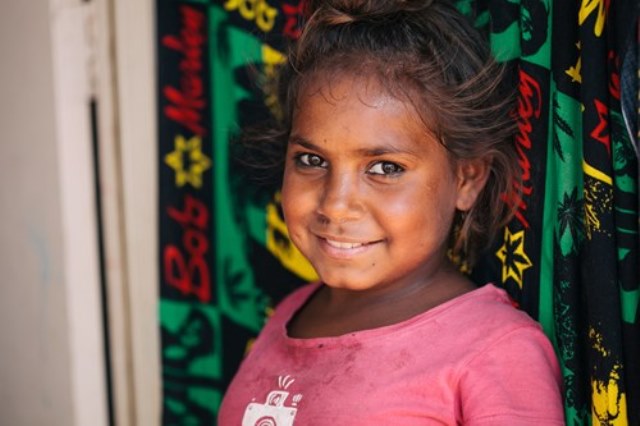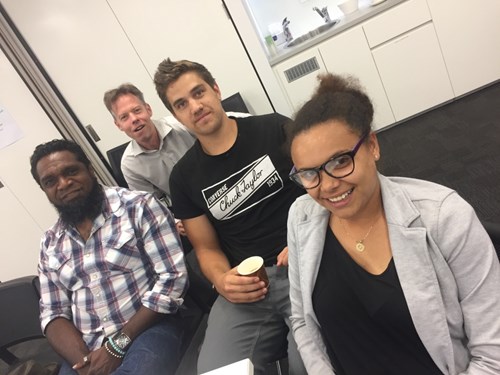“I think it is good when people like you come out and ask us what we think because then they know the real truth. So they don’t just guess and there’s things they can work on so things can get better.” 15 year-old Aboriginal young person, foster care
Stage 2 - Preparing to involve Aboriginal children and young people

This stage requires you to engage with the community you intend to target to check your previous assessment and inform the development of your internal/draft project scope. This ensures that you act on an informed basis in moving to Stage 3.
Stage 2 has two steps:
Step 1
Build relationships
“They have some mentors but they never have male mentors. My grandson needs a male mentor who’s ongoing, who’s in there for the long run. I’m old, I struggle to walk to the front gate. I can’t go and kick a footy in the park with him. He needs someone who will stick with him. Not just like with JJT [Juvenile Justice Team] where there’s someone for four months and then that’s it, you’re on your own.” Grandmother
Remember the importance of starting the relationship properly. Before commencing work in the community, the community must invite you in and request your involvement in addressing the issues being targeted by your organisation or agency. Together, your organisation/agency and the relevant community leadership and stakeholders will need to decide the best way to approach the issues being targeted by your organisation or agency.
Taking time to build relationships provides opportunities to foster mutual respect, trust and reciprocal exchange; all of which are critical elements to working effectively with Aboriginal communities and which will require a significant period of investment from your organisation/agency to develop. These networks can enhance the process of involving Aboriginal children and young people in your organisation or agency and the outcomes of your project or initiative for the community. These relationships will also help you to manage any issues that arise during the consultation, such as whether it is appropriate to run planned activities following a disruption or loss in the community.
Working with Indigenous children, families, and communities: Lessons from practice - Australian Institute of Family Studies
Consulting with the community
“I help these kids out, like talk to them and sometimes we even cook dinner for them. I also help with the kids programs on the weekends. There are things like girls and boy’s fishing trips. Girls and boys aren’t allowed to socialise together up here. It’s just how it is. I don’t mind, we still have fun.” 17 year-old young person, Kununurra
This is your opportunity to introduce yourself, your organisation/agency and the work you are planning to undertake in the community.
Having identified local leaders and stakeholders as part of your community mapping, now is the time to have preliminary discussions about:
- the concept you have come up with and what the community thinks about it
- the community’s level of interest in what you are proposing
- the community’s expectations on how you will recruit children and young people to participate and how you will implement the program
- the community’s expectations on their involvement and feedback they will receive.
If the community is not responding well to your draft concept, you will need to develop a new concept with the community that meets the needs of your organisation/agency and the community. Remember, even after you have agreed a concept and plan with the community, you must remain flexible in order to be responsive to community needs.
In addition to exploring and reflecting on your own cultural beliefs and learning about cultural differences (see the Understanding Aboriginal cultural contexts section of this toolkit), there are many things you can do to help build rapport with Aboriginal children and young people and their community. A few examples are:
- seek guidance about local community protocols
- always be open, honest and respectful
- use clear and plain language, uncomplicated by jargon (see Understanding Aboriginal cultural contexts)
- avoid speaking in a manner that is condescending or paternalistic
- do not make promises that you may not be able to deliver
- be prepared to admit mistakes and/or lack of knowledge and seek guidance from young people and community members
- avoid acting as though you are the ‘expert’ – demonstrate that you want to listen and learn from Aboriginal children and young people and their community because you value their views and ideas
- agree next steps for progress or feedback during the engagement and ensure they are delivered upon.
Consulting with other service providers and stakeholders
Organisations or agencies already ‘on the ground’ in the community will have insight into what does and does not work in that community and are a valuable resource to your organisation/agency.
Taking the time to introduce yourself, your organisation/aency and your proposed work is also an opportunity to bring other stakeholders on board who have established relationships and communication with your target audience.
These early conversations will help to prevent service overlap, create valuable partnerships and respect the existing systems and services in place in the community.
Case study extract
Lore Law Project – Build relationships
The Lore Law Project has a number of stakeholders as well as its core working group, so it has been important to develop clear lines of communication between the groups to ensure that the project remains focused and on track. Part of the success of the Indigenous Youth Leadership Team (IYLT) is the strong relationship between its members and their common focus on achieving better outcomes for Aboriginal children and young people.
“The IYLT first presented the project and a pilot film to the Steering Group, the FBLEP Advisory Committee and the Law Society Council with the aim of having the project proposal approved and signed-off. From that point, the Law Society, with input from the project team, facilitated sessions with the IYLT to promote and advocate the project to stakeholders. This ensured wider community participation and buy-in so the project did not develop in isolation, while also gaining project ambassadors from stakeholders in the wider community to support the project’s sustainability.”
View the Lore Law Project case study

Step 2
Review your processes
“Adults have to start listening more to us kids, instead of just telling us what to do all the time.” 16 year-old young person, Great Southern
Once you have agreed on an approach with the community and stakeholders, it is time to revisit and update your draft project scope and finalise a project plan, including a communication plan.
Project planning tool template - Commissioner for Children and Young People WA
Once you have a project plan, host a session for all staff and volunteers working with the Aboriginal children and young people on the project and cover:
- the plan for the activity/participation
- the applicable processes and protocols as agreed with the community, including on obtaining consent
- the information sharing/communication plan and materials
- revisit your duty of care requirements and processes
- contact numbers of responsible staff for any queries, concerns or issues on the day
- any questions staff or volunteers may have.



